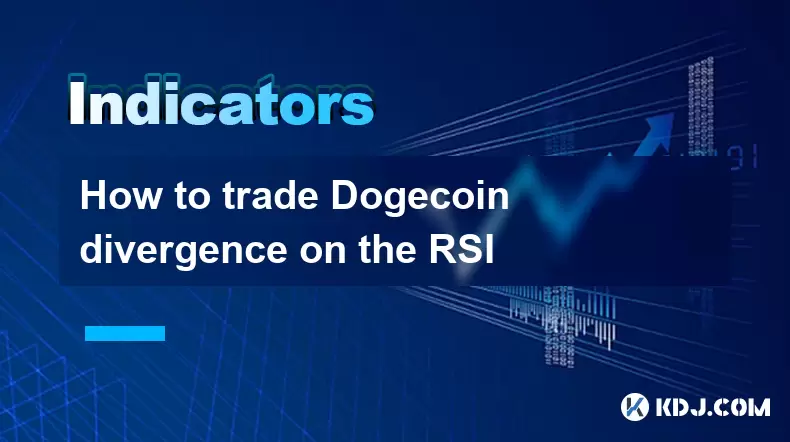-
 Bitcoin
Bitcoin $120400
1.77% -
 Ethereum
Ethereum $3615
7.90% -
 XRP
XRP $3.580
17.84% -
 Tether USDt
Tether USDt $1.001
0.06% -
 BNB
BNB $729.4
1.25% -
 Solana
Solana $179.9
5.04% -
 USDC
USDC $0.0000
0.01% -
 Dogecoin
Dogecoin $0.2311
8.22% -
 TRON
TRON $0.3226
4.04% -
 Cardano
Cardano $0.8490
12.85% -
 Hyperliquid
Hyperliquid $46.45
0.72% -
 Stellar
Stellar $0.4913
8.54% -
 Sui
Sui $4.027
2.00% -
 Chainlink
Chainlink $18.51
11.67% -
 Hedera
Hedera $0.2818
21.51% -
 Avalanche
Avalanche $24.03
7.40% -
 Bitcoin Cash
Bitcoin Cash $508.5
2.90% -
 Shiba Inu
Shiba Inu $0.00001496
3.24% -
 UNUS SED LEO
UNUS SED LEO $8.961
1.83% -
 Toncoin
Toncoin $3.264
3.13% -
 Litecoin
Litecoin $104.6
8.15% -
 Polkadot
Polkadot $4.389
6.11% -
 Uniswap
Uniswap $9.924
10.63% -
 Monero
Monero $337.9
0.49% -
 Pepe
Pepe $0.00001376
2.79% -
 Bitget Token
Bitget Token $4.830
2.46% -
 Ethena USDe
Ethena USDe $1.001
0.05% -
 Dai
Dai $1.000
0.02% -
 Aave
Aave $325.2
1.66% -
 Bittensor
Bittensor $423.7
-0.85%
How to trade Bitcoincoin divergence on the RSI
Dogecoin traders use RSI divergence to spot potential trend reversals by comparing price action with momentum signals.
Jul 15, 2025 at 11:29 am

Understanding Dogecoin Divergence in RSI Trading
Divergence trading is a popular technical analysis strategy used by traders to identify potential reversals in price trends. In the context of Dogecoin (DOGE), divergence occurs when the price action and the Relative Strength Index (RSI) move in opposite directions. This discrepancy can signal weakening momentum and a possible trend reversal. For example, if Dogecoin’s price makes a new high but the RSI does not, this bearish divergence might indicate that the uptrend is losing strength.
Conversely, if Dogecoin’s price hits a new low while the RSI forms a higher low, it suggests bullish divergence — a sign that downward pressure may be diminishing. Recognizing these patterns allows traders to anticipate shifts in market sentiment before they are reflected in price. However, divergence alone should not be the sole basis for entering a trade; it works best when combined with other indicators or chart patterns.
Setting Up Your Chart for RSI Divergence Analysis
To effectively analyze Dogecoin divergence using RSI, you need a properly configured chart. Most cryptocurrency trading platforms like Binance, TradingView, or Bybit offer customizable tools for this purpose. Start by selecting the Dogecoin/USDT trading pair and choose a time frame suitable for your trading style — typically 1-hour, 4-hour, or daily charts are preferred for spotting reliable divergences.
Next, apply the Relative Strength Index indicator to your chart. The standard setting for RSI is 14 periods, which provides a balanced view of recent price action. Once added, ensure the RSI panel appears beneath the price chart so you can easily compare both elements. It's also helpful to enable drawing tools, such as trendlines, to visually connect highs and lows on both the price and RSI lines. These visual aids make identifying divergences more intuitive and reduce the chances of missing key signals.
Identifying Bearish Divergence in Dogecoin Using RSI
Bearish divergence in Dogecoin trading often serves as an early warning that upward momentum is fading. To spot this pattern, look for instances where Dogecoin’s price reaches a new high, but the corresponding RSI peak does not confirm the move. Instead, the RSI creates a lower high, suggesting that buying pressure is decreasing even though the price continues to rise.
For example, imagine Dogecoin climbs from $0.07 to $0.08, forming a new high. At the same time, the RSI peaks at 72 during this move. In the next rally, the price goes up again to $0.085, but the RSI only reaches 68, creating a clear bearish divergence. Traders interpret this as a sign that bulls are losing control and that a potential downtrend could follow. However, never act immediately on divergence alone — wait for confirmation through candlestick patterns or volume changes before considering a short position.
Spotting Bullish Divergence in Dogecoin With RSI
Bullish divergence is the inverse of bearish divergence and indicates that a downtrend may be nearing exhaustion. In Dogecoin trading, this occurs when the price makes a new low, but the RSI fails to reach a new low and instead forms a higher low. This scenario suggests that sellers are becoming less aggressive, potentially paving the way for a bullish reversal.
Consider a situation where Dogecoin drops from $0.07 to $0.06, hitting a fresh low. The RSI falls to 30, indicating oversold conditions. Then, during the next decline, the price touches $0.055, yet the RSI only dips to 35, forming a higher low. This bullish divergence implies that downside momentum is weakening. Again, do not enter a long position immediately upon spotting this pattern. Wait for a breakout above a key resistance level or a bullish candlestick formation to increase the probability of a successful trade.
Confirming RSI Divergence Signals for Dogecoin Trades
Once a divergence is identified, the next step is to confirm its validity before executing a trade. One effective method is to use candlestick patterns for confirmation. A bearish engulfing pattern following a bearish divergence can reinforce the likelihood of a downtrend. Similarly, a morning star or hammer candlestick after a bullish divergence can serve as a strong signal to consider going long.
Another technique involves analyzing volume behavior. If Dogecoin experiences a surge in volume during a bearish divergence, it may suggest that institutional players are actively selling, increasing the chance of a reversal. Conversely, if volume remains low during a bullish divergence, it might indicate indecision rather than a strong reversal setup. Additionally, using moving averages or support/resistance levels can further validate divergence signals. For instance, a rejection from a major resistance zone coinciding with bearish divergence increases the reliability of the trade setup.
Entering and Managing Trades Based on Dogecoin RSI Divergence
After confirming a divergence signal, it's crucial to plan your entry and risk management carefully. When entering a trade based on RSI divergence in Dogecoin, it's advisable to wait for a confirmed close beyond a key support or resistance level. For example, if a bearish divergence aligns with a broken support level, entering a short position after the price closes below that level can provide a better risk-reward ratio.
Setting stop-loss orders is essential to protect against unexpected price spikes. For short trades, place the stop-loss slightly above the most recent swing high. For long trades, set it just below the prior swing low. Take-profit levels can be determined using Fibonacci extensions or previous support/resistance zones. Always aim for a minimum risk-reward ratio of 1:2 to ensure profitability over time.
- Use a stop-loss order to limit losses.
- Place take-profit targets near key Fibonacci levels.
- Adjust position size based on account risk percentage.
- Monitor price action for signs of false breakouts.
These steps help maintain discipline and prevent emotional decision-making when trading Dogecoin divergence with RSI.
Frequently Asked Questions
What time frame is best for detecting RSI divergence in Dogecoin?
While divergence can appear on any time frame, the 1-hour and 4-hour charts are commonly used for intraday and swing trading strategies. These intervals strike a balance between noise reduction and responsiveness to market changes.
Can RSI divergence occur with other cryptocurrencies besides Dogecoin?
Yes, RSI divergence is a universal technical analysis tool applicable to all financial assets, including Bitcoin, Ethereum, and altcoins. The principles remain the same regardless of the asset being traded.
Is divergence trading suitable for beginners in crypto markets?
Divergence trading requires a solid understanding of technical analysis and patience. Beginners should first practice identifying divergence on demo accounts before risking real capital. It's also important to combine divergence with other confirming indicators for better accuracy.
Does divergence always lead to a price reversal in Dogecoin?
No, divergence is not a guaranteed predictor of price reversals. It merely indicates a potential shift in momentum. Many times, price may continue trending despite divergence. That’s why confirmation from other tools is necessary before taking action.
Disclaimer:info@kdj.com
The information provided is not trading advice. kdj.com does not assume any responsibility for any investments made based on the information provided in this article. Cryptocurrencies are highly volatile and it is highly recommended that you invest with caution after thorough research!
If you believe that the content used on this website infringes your copyright, please contact us immediately (info@kdj.com) and we will delete it promptly.
- MEXC's Q2 Domination: Riding the Crypto Wave to Market Leadership
- 2025-07-18 18:30:12
- Caldera (ERA) Takes Flight: Binance Listing Ignites Crypto Surge
- 2025-07-18 19:10:13
- Hex Trust and Algorand: Institutional Staking Rewards Take Center Stage
- 2025-07-18 19:50:13
- XRP, Ethereum, and the Crypto Rotation: Where's the Smart Money Going?
- 2025-07-18 19:15:13
- DeFi Lending, Fintech, and Morpho: A New Era?
- 2025-07-18 19:50:13
- Ethereum, Litecoin, and Institutional Crypto: What's the Deal?
- 2025-07-18 19:55:13
Related knowledge

Advanced RSI strategies for crypto
Jul 13,2025 at 11:01am
Understanding the Basics of RSI in Cryptocurrency TradingThe Relative Strength Index (RSI) is a momentum oscillator used to measure the speed and chan...

Crypto RSI for day trading
Jul 12,2025 at 11:14am
Understanding RSI in the Context of Cryptocurrency TradingThe Relative Strength Index (RSI) is a momentum oscillator used to measure the speed and cha...

Crypto RSI for scalping
Jul 12,2025 at 11:00pm
Understanding RSI in the Context of Crypto TradingThe Relative Strength Index (RSI) is a momentum oscillator widely used by traders to measure the spe...

What does an RSI of 30 mean in crypto
Jul 15,2025 at 07:07pm
Understanding RSI in Cryptocurrency TradingRelative Strength Index (RSI) is a momentum oscillator widely used in cryptocurrency trading to measure the...

What does an RSI of 70 mean in crypto
Jul 13,2025 at 06:07pm
Understanding the RSI Indicator in Cryptocurrency TradingThe Relative Strength Index (RSI) is a widely used technical analysis tool that helps traders...

Does RSI work in a bear market for crypto
Jul 16,2025 at 01:36pm
Understanding RSI in Cryptocurrency TradingThe Relative Strength Index (RSI) is a momentum oscillator used by traders to measure the speed and change ...

Advanced RSI strategies for crypto
Jul 13,2025 at 11:01am
Understanding the Basics of RSI in Cryptocurrency TradingThe Relative Strength Index (RSI) is a momentum oscillator used to measure the speed and chan...

Crypto RSI for day trading
Jul 12,2025 at 11:14am
Understanding RSI in the Context of Cryptocurrency TradingThe Relative Strength Index (RSI) is a momentum oscillator used to measure the speed and cha...

Crypto RSI for scalping
Jul 12,2025 at 11:00pm
Understanding RSI in the Context of Crypto TradingThe Relative Strength Index (RSI) is a momentum oscillator widely used by traders to measure the spe...

What does an RSI of 30 mean in crypto
Jul 15,2025 at 07:07pm
Understanding RSI in Cryptocurrency TradingRelative Strength Index (RSI) is a momentum oscillator widely used in cryptocurrency trading to measure the...

What does an RSI of 70 mean in crypto
Jul 13,2025 at 06:07pm
Understanding the RSI Indicator in Cryptocurrency TradingThe Relative Strength Index (RSI) is a widely used technical analysis tool that helps traders...

Does RSI work in a bear market for crypto
Jul 16,2025 at 01:36pm
Understanding RSI in Cryptocurrency TradingThe Relative Strength Index (RSI) is a momentum oscillator used by traders to measure the speed and change ...
See all articles

























































































